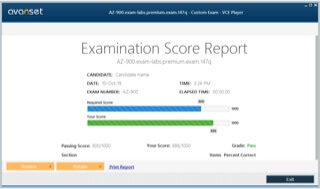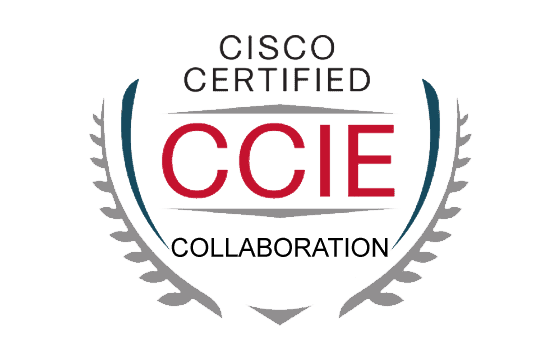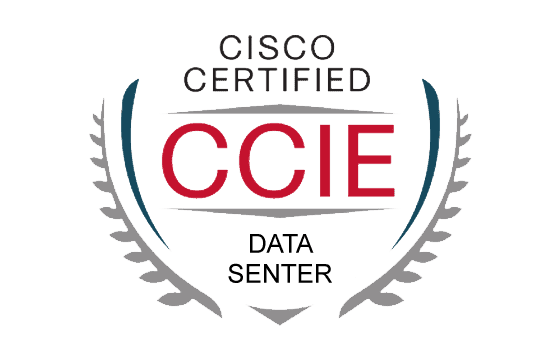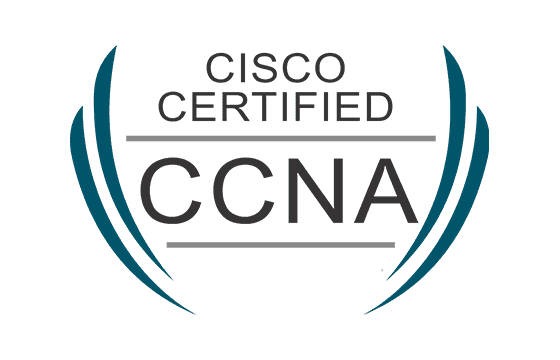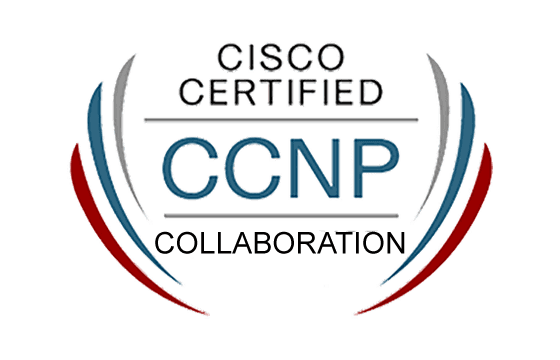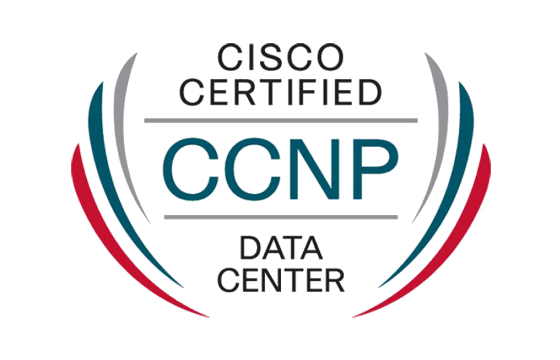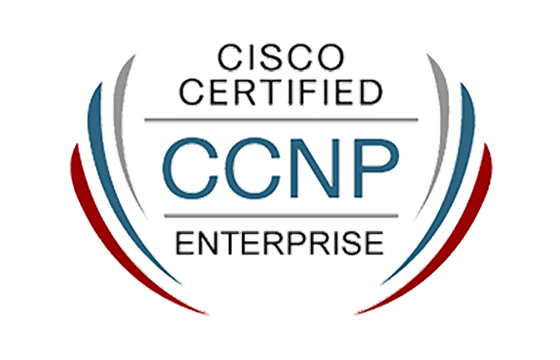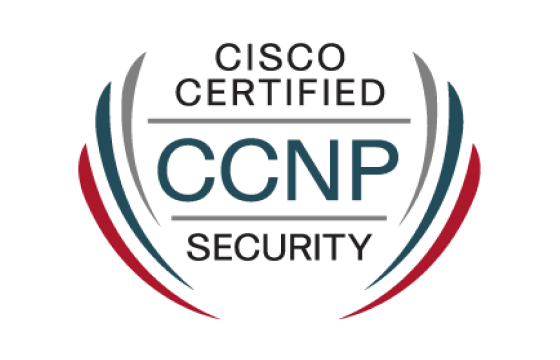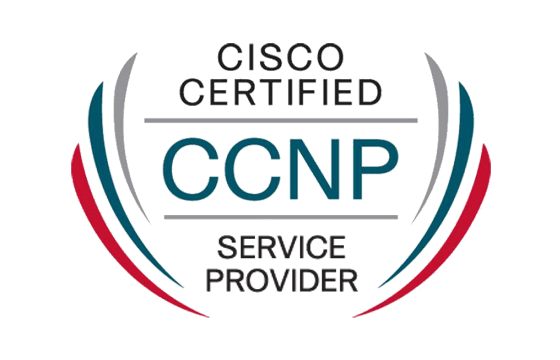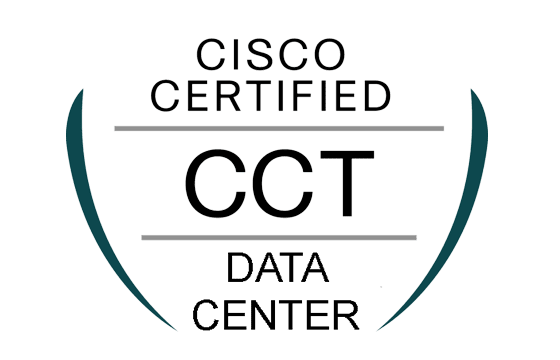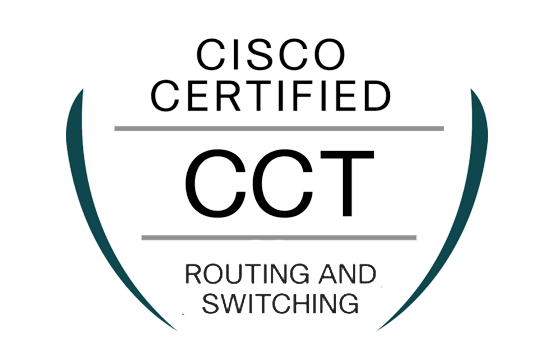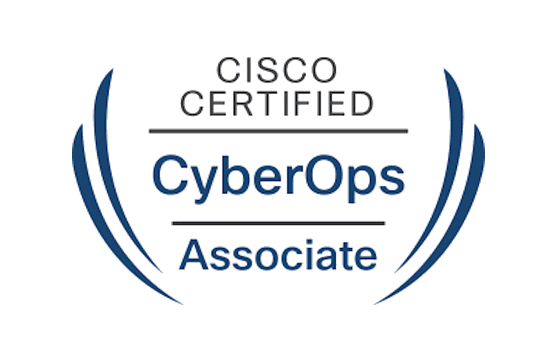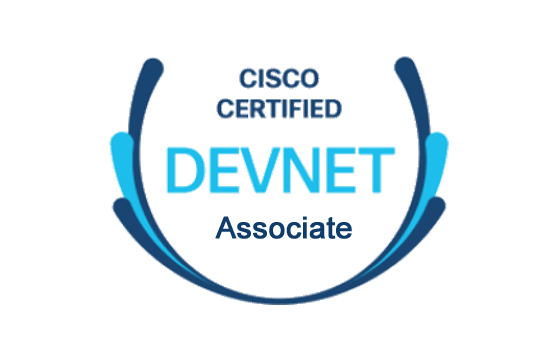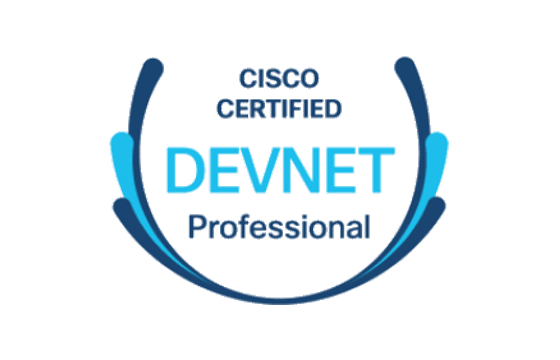Pass Your Cisco 640-822 Exam Easy!
Cisco 640-822 Exam Questions & Answers, Accurate & Verified By IT Experts
Instant Download, Free Fast Updates, 99.6% Pass Rate
This exam was replaced by Cisco with 100-101 exam
Archived VCE files
| File | Votes | Size | Date |
|---|---|---|---|
File Cisco.Pass4Sure.640-822.v2012-12-09.by.ICND1.399q.vce |
Votes 18 |
Size 17.45 MB |
Date Dec 10, 2012 |
File Cisco.SelfTestEngine.640-822.v2012-08-29.by.Peyton.357q.vce |
Votes 1 |
Size 14.64 MB |
Date Aug 29, 2012 |
File Cisco.Passguide.640-822.v2012-04-06.by.Daniel.339q.vce |
Votes 1 |
Size 12.87 MB |
Date Apr 08, 2012 |
File Cisco.Certkey.640-822.v2012-02-16.by.tjasp.268q.vce |
Votes 1 |
Size 10.19 MB |
Date Feb 16, 2012 |
File Cisco.SelfTestEngine.640-822.v2010-07-31.by.Ariel.237q.vce |
Votes 1 |
Size 11.95 MB |
Date Aug 04, 2010 |
File Cisco.SelfTestEngine.640-822.v2010-03-04.by.Taylor.209q.vce |
Votes 1 |
Size 11.14 MB |
Date Mar 04, 2010 |
Cisco 640-822 Practice Test Questions, Exam Dumps
Cisco 640-822 (Interconnecting Cisco Networking Devices Part 1) exam dumps vce, practice test questions, study guide & video training course to study and pass quickly and easily. Cisco 640-822 Interconnecting Cisco Networking Devices Part 1 exam dumps & practice test questions and answers. You need avanset vce exam simulator in order to study the Cisco 640-822 certification exam dumps & Cisco 640-822 practice test questions in vce format.
The Evolution from the Cisco 640-822 Exam to Modern Networking
The 640-822 exam, or ICND1, served as the entry point for a generation of network engineers. It was the first of a two-exam track to achieve the Cisco Certified Network Associate (CCNA) certification. Passing the 640-822 exam granted the Cisco Certified Entry Networking Technician (CCENT) certification, a credential that validated an individual's ability to install, operate, and troubleshoot a small branch office network. This exam focused heavily on foundational concepts, creating a strong base for aspiring professionals. Its curriculum was designed to ensure a solid grasp of networking before moving on to more complex topics in the second exam, ICND2.
The core curriculum of the 640-822 exam revolved around essential building blocks. This included a deep dive into the OSI and TCP/IP models, which are fundamental to understanding how data travels across a network. Candidates were required to master IP addressing, including subnetting for both IPv4 and, to a lesser extent, IPv6. The exam also covered the basic configuration and verification of Cisco routers and switches. This hands-on component was crucial, as it tested not just theoretical knowledge but also the practical skills needed to manage network hardware in a real-world setting.
Security fundamentals were also a key component, albeit a basic one. The 640-822 exam introduced concepts like securing administrative access on Cisco devices, implementing port security on switches to prevent unauthorized access, and understanding the role of Access Control Lists (ACLs) to filter traffic. While not as extensive as the security topics in today's exams, this early introduction laid the groundwork for a security-conscious mindset, which has become increasingly critical in the field of network engineering. The focus was on establishing a secure baseline for small network environments.
Another significant area covered was the introduction to Wide Area Network (WAN) technologies. The exam curriculum detailed various WAN connection types, such as leased lines, Frame Relay, and PPP (Point-to-Point Protocol). Understanding how to connect different branch offices over a large geographical area was a vital skill. While many of these specific technologies are now considered legacy, the underlying principles of WAN connectivity taught in the 640-822 exam remain relevant. This knowledge provided the context for how local networks connect to the broader internet and to other private networks.
The retirement of the 640-822 exam marked a significant shift in Cisco's certification philosophy. The industry was rapidly moving towards automation, programmability, and a more integrated approach to networking and security. Cisco recognized that the two-exam CCNA track was becoming fragmented. The new CCNA 200-301 exam was created to consolidate these topics into a single, comprehensive exam that better reflects the skills required of a modern network associate. This change streamlined the certification path and updated the content to align with current technological trends and job roles.
Introducing the Modern CCNA 200-301
The CCNA 200-301 certification represents a complete overhaul of Cisco's associate-level program. Unlike the specialized tracks of the past (like CCNA Routing & Switching, CCNA Security, etc.), the new CCNA is a single, broad certification. It is designed to validate a wide range of foundational knowledge and skills, making it the new industry standard for entry-level networking professionals. This exam ensures that a certified individual has a holistic understanding of the entire networking lifecycle, from fundamental principles to emerging technologies like automation, which were not part of the old 640-822 exam.
A primary focus of the new CCNA is on network fundamentals, but with a modern perspective. While topics like TCP/IP, subnetting, and Ethernet are still present, they are taught with an emphasis on how they operate in today's complex network environments. The exam blueprint places significant weight on understanding the role and function of network components like routers, switches, access points, and controllers. It also introduces candidates to network architecture types, including the traditional three-tier architecture and the more modern spine-leaf architecture found in data centers, providing a much broader view than the 640-822 exam.
Network access is another critical domain, expanding significantly on the concepts introduced in the 640-822 exam. This section covers the configuration and verification of VLANs (Virtual LANs) and trunking using the 802.1Q standard, which are essential for segmenting network traffic. It also delves into Spanning Tree Protocol (STP) for preventing loops in a switched network. Furthermore, a major addition is the detailed coverage of wireless LANs (WLANs), including the components of a Cisco wireless architecture, securing a wireless network using WPA2, and understanding basic Wi-Fi principles.
IP connectivity remains a cornerstone of the certification, testing a candidate's ability to configure and troubleshoot routing. The exam focuses on static routing and a single dynamic routing protocol: OSPFv2 (Open Shortest Path First). This streamlined approach ensures that candidates have a deep understanding of a modern, widely used interior gateway protocol, rather than a surface-level knowledge of multiple, older protocols like EIGRP or RIP that were part of previous exams. Understanding how to establish connectivity between different IP networks is a fundamental skill tested thoroughly in this domain.
Finally, the new CCNA introduces two domains that were largely absent from the 640-822 exam: IP Services and Automation and Programmability. IP Services covers critical network functions like DHCP (Dynamic Host Configuration Protocol), DNS (Domain Name System), and NAT (Network Address Translation). The Automation and Programmability section is entirely new and reflects the industry's shift towards software-defined networking (SDN). It requires candidates to understand the basic concepts of controller-based networking, APIs (Application Programming Interfaces), and configuration management tools, preparing them for the future of network management.
Bridging the Knowledge Gap
For those who started their studies with materials for the 640-822 exam, transitioning to the current CCNA 200-301 requires bridging a significant knowledge gap. The foundational concepts of networking, such as the OSI model, TCP/IP, and IPv4 subnetting, remain essential and are directly transferable. The time invested in mastering these areas is not wasted. However, one must recognize that the new exam expands upon these fundamentals and introduces entirely new topic areas that need to be learned from scratch to be successful.
The most significant new area is automation and programmability. This section is approximately 10% of the CCNA 200-301 exam and covers concepts that had no parallel in the 640-822 exam. Candidates must now understand the difference between traditional networks and controller-based networks. They need to be familiar with concepts like northbound and southbound APIs and recognize the role of REST APIs in network automation. Familiarity with data formats like JSON (JavaScript Object Notation) and configuration management tools such as Puppet, Chef, and Ansible is also expected at a conceptual level.
Security fundamentals have also been expanded and modernized. While the 640-822 exam covered basic device hardening and port security, the new CCNA delves deeper. It requires knowledge of modern security threats, threat mitigation techniques, and security architectures. Candidates must be able to configure and verify Access Control Lists (ACLs) with more proficiency. The exam also introduces concepts like Dynamic ARP Inspection (DAI), DHCP snooping, and the components of a site-to-site VPN. These topics reflect the increased importance of security in every network role.
Wireless networking is another area that has received a major update. The 640-822 exam barely touched upon wireless technologies. In contrast, the CCNA 200-301 dedicates a significant portion of its blueprint to Wireless LANs (WLANs). Candidates need to understand the principles of RF (Radio Frequency), WLAN components like Access Points (APs) and Wireless LAN Controllers (WLCs), and different WLAN architectures. They must also know how to configure a basic wireless network using a WLC and implement security using WPA2 PSK (Pre-Shared Key).
Finally, the scope of routing and switching protocols has been both narrowed and deepened. The new CCNA focuses solely on OSPFv2 for dynamic routing, removing the need to study EIGRP or RIP. This allows for a more in-depth understanding of OSPF's operation, configuration, and troubleshooting. Similarly, while WAN technologies like Frame Relay were part of the old curriculum, they have been removed in favor of more modern concepts. The emphasis is now on understanding the IP connectivity that underpins all modern networks, whether they are local, wide area, or cloud-based.
Deep Dive into Network Components and Architectures
A thorough understanding of network components is the bedrock of any networking career, a principle that was true for the 640-822 exam and remains critical today. At the most basic level, you have end devices like PCs, servers, and smartphones. These are connected by intermediary devices such as switches, routers, and wireless access points. Switches operate at Layer 2 (Data Link Layer) of the OSI model, using MAC addresses to forward frames within a local network. Routers operate at Layer 3 (Network Layer), using IP addresses to forward packets between different networks.
Modern networks also rely heavily on next-generation firewalls (NGFWs) and Intrusion Prevention Systems (IPS) to provide security. These devices inspect traffic at a much deeper level than traditional routers and can make decisions based on application data. Wireless LAN Controllers (WLCs) are another crucial component in enterprise environments, used to manage, configure, and monitor multiple access points from a single, centralized location. Understanding the specific role and function of each of these devices is essential for designing and troubleshooting a network effectively. The current CCNA requires a broader understanding of these components compared to the 640-822 exam.
Beyond individual components, it is vital to understand common network architectures. The traditional three-tier hierarchical network design consists of the core, distribution, and access layers. The access layer is where end devices connect to the network. The distribution layer aggregates traffic from the access layer and enforces policy. The core layer provides a high-speed backbone for forwarding traffic between distribution layer devices. This design is highly scalable and resilient but is being supplemented by newer models.
A more modern approach, especially in data centers, is the spine-leaf architecture. In this two-tier design, servers connect to leaf switches, and every leaf switch connects to every spine switch. This creates a highly resilient and low-latency fabric that is optimized for east-west traffic (traffic between servers). The CCNA 200-301 exam expects candidates to be able to compare and contrast these different architectures. This is a significant evolution from the 640-822 exam, which focused almost exclusively on the traditional hierarchical model for small and medium-sized businesses.
Finally, understanding the physical connectivity is non-negotiable. This includes knowledge of different copper cable types, such as Cat5e, Cat6, and their properties. It also involves familiarity with fiber optic cables, including single-mode and multi-mode fiber, and when to use each. Concepts like Power over Ethernet (PoE), which allows devices like IP phones and access points to be powered through their Ethernet cables, are also part of the curriculum. A firm grasp of this physical layer is the first step in troubleshooting any network connectivity issue.
The OSI and TCP/IP Models Revisited
The OSI (Open Systems Interconnection) and TCP/IP models are conceptual frameworks that standardize the functions of a telecommunication or computing system in layers. While the 640-822 exam required a solid understanding of these models, the modern curriculum emphasizes their practical application in troubleshooting. The OSI model is composed of seven layers: Physical, Data Link, Network, Transport, Session, Presentation, and Application. Each layer serves a specific function and communicates with the layers directly above and below it. This modularity simplifies the process of network diagnostics.
The TCP/IP model, also known as the DoD model, is a more practical and widely implemented framework. It consists of four layers: Network Interface (or Link), Internet, Transport, and Application. This model maps directly to the OSI model. The Network Interface layer corresponds to the OSI Physical and Data Link layers. The Internet layer maps to the OSI Network layer. The Transport layer aligns with the OSI Transport layer, and the Application layer covers the functions of the OSI Session, Presentation, and Application layers.
Understanding data encapsulation is key to using these models effectively. As data moves down the protocol stack from the Application layer, each layer adds its own header, wrapping the data from the layer above. This process is called encapsulation. For example, the Transport layer adds a TCP or UDP header, creating a segment. The Network layer adds an IP header, creating a packet. The Data Link layer adds a MAC address header, creating a frame. When the data reaches the destination, this process is reversed in a process called de-encapsulation.
This process allows for a structured approach to troubleshooting. If a user cannot access a website, a network engineer can work their way up the OSI model. Is the cable plugged in (Layer 1)? Is the switch port active and is there a link light (Layer 2)? Can the user's PC ping its default gateway (Layer 3)? Can a DNS query be resolved (Layer 7)? This logical methodology, based on the OSI model, is a fundamental skill that has remained constant since the days of the 640-822 exam.
The CCNA 200-301 expects a deeper understanding of the protocols that operate at each layer. At the Transport layer, you must know the difference between TCP (Transmission Control Protocol) and UDP (User Datagram Protocol). TCP is connection-oriented and reliable, providing error checking and flow control, making it suitable for web browsing and email. UDP is connectionless and faster, making it ideal for real-time applications like voice and video streaming where speed is more important than perfect reliability.
Mastering IPv4 and IPv6 Addressing
IP addressing is arguably one of the most important topics for any networking exam, including the old 640-822 exam and the current CCNA. IPv4 addresses are 32-bit numbers, typically written in dotted-decimal notation (e.g., 192.168.1.1). A crucial skill is subnetting, which is the process of dividing a large network into smaller, more manageable subnetworks. This is done by borrowing bits from the host portion of the address to create a subnet mask. Subnetting improves security, performance, and organization. Mastery of calculating subnets, network addresses, broadcast addresses, and valid host ranges is non-negotiable.
The concept of public and private IPv4 addresses is also fundamental. Private address ranges, as defined in RFC 1918 (10.0.0.0/8, 172.16.0.0/12, and 192.168.0.0/16), are used within internal networks and are not routable on the public internet. To allow devices with private addresses to communicate with the internet, a technology called Network Address Translation (NAT) is used, which is a key topic in the IP Services domain. This distinction is critical for network design and security.
While IPv4 is still dominant, the world is slowly transitioning to IPv6 due to the exhaustion of available IPv4 addresses. The CCNA 200-301 places a greater emphasis on IPv6 than the 640-822 exam did. IPv6 addresses are 128-bit hexadecimal numbers, providing a virtually limitless address space. They are written as eight groups of four hexadecimal digits, separated by colons (e.g., 2001:0db8:85a3:0000:0000:8a2e:0370:7334). Candidates need to understand the format of these addresses and how to abbreviate them by removing leading zeros and compressing consecutive groups of zeros.
IPv6 also introduces different address types. Global Unicast Addresses are the equivalent of public IPv4 addresses and are routable on the internet. Unique Local Addresses are similar to private IPv4 addresses and are used for local communications. Link-Local Addresses are automatically configured on every IPv6-enabled interface and are used for communication on a single network segment. Understanding these address scopes is essential for configuring and troubleshooting IPv6 networks. The exam expects familiarity with how IPv6 hosts can configure their addresses using methods like SLAAC (Stateless Address Autoconfiguration).
For both IPv4 and IPv6, the CCNA exam tests the ability to configure and verify IP addressing on device interfaces, including routers and end hosts. This includes assigning an IP address and a subnet mask (or prefix-length for IPv6) to an interface and ensuring that it is active. Verification commands, such as show ip interface brief in the Cisco IOS command-line interface, are essential tools that candidates must be proficient with. This practical skill connects the theoretical knowledge of addressing to real-world network operations.
Configuring Switching and Wireless Access
Layer 2 switching is the foundation of local area networking. The CCNA exam requires extensive knowledge of configuring and verifying VLANs (Virtual LANs) and trunking. VLANs allow a network administrator to segment a physical switch into multiple logical broadcast domains. This enhances security by isolating traffic and improves performance by reducing the size of broadcast domains. Devices in one VLAN cannot communicate with devices in another VLAN without a Layer 3 device, such as a router or a multilayer switch.
To carry traffic for multiple VLANs between switches, a trunk link is used. The exam focuses on the IEEE 802.1Q trunking protocol, which works by adding a "tag" to the Ethernet frame that identifies the VLAN it belongs to. Candidates must be able to configure a switch port as an access port (belonging to a single VLAN) or a trunk port (carrying multiple VLANs). They must also understand concepts like the native VLAN, which is the one VLAN on a trunk that does not have its traffic tagged.
To prevent broadcast storms and other issues caused by loops in a redundant switched topology, the Spanning Tree Protocol (STP) is used. STP works by logically blocking redundant paths to ensure that there is only one active path between any two points on the network. The CCNA requires an understanding of how STP elects a root bridge and how it determines port roles (root port, designated port, blocking port). While the 640-822 exam covered STP, the modern exam may also touch upon its faster successor, RSTP (Rapid Spanning Tree Protocol).
A major update from the 640-822 exam is the detailed inclusion of Wireless LAN (WLAN) configuration. Candidates must understand the components of a corporate wireless network, including Lightweight Access Points (LAPs) and Wireless LAN Controllers (WLCs). In this architecture, the WLC acts as the brain of the network, managing all the LAPs, pushing out configurations, and handling client authentication. This centralized management model is standard in most enterprise environments.
The exam requires knowledge of configuring a basic WLAN on a WLC. This includes creating a new WLAN, assigning it an SSID (the network name that is broadcast), and configuring security settings. The primary security protocol covered is WPA2 with Pre-Shared Key (PSK), which is common in small and home office environments. Understanding the different frequency bands (2.4 GHz and 5 GHz) and the channels they use is also important for planning and troubleshooting wireless coverage.
Fundamentals of IP Routing
Routing is the process of selecting a path for traffic to travel from a source to a destination across multiple networks. It is the fundamental function of a Layer 3 device, the router. Every router makes its decisions based on its routing table. The routing table is a database that contains a list of known networks and the best path to reach them. When a router receives a packet, it examines the destination IP address in the packet's header and performs a lookup in its routing table to determine the next-hop router to send the packet to.
A router's routing table can be populated in several ways. Directly connected networks are added automatically when an interface is configured with an IP address and is active. These are the networks that the router can reach without assistance. For remote networks that are not directly connected, the router needs additional information. This information is typically provided through either static routes or a dynamic routing protocol. This core concept has been a staple of Cisco certification since the beginning, including the 640-822 exam.
A static route is a manually configured entry in the routing table. An administrator explicitly tells the router that to reach a specific destination network, it must send the traffic to a specific next-hop IP address or out of a specific exit interface. Static routes are simple to configure and are very secure because they are not advertised over the network. They are ideal for small, simple networks or for defining a default route, which is a special type of static route that tells the router where to send traffic for which it has no specific entry in its table.
The administrative distance (AD) is a crucial concept in routing. It is a value from 0 to 255 that represents the trustworthiness of a routing source. A lower administrative distance is preferred. For example, a directly connected network has an AD of 0, a static route has an AD of 1, and dynamic routing protocols have higher values. If a router learns about the same destination network from multiple sources, it will use the route with the lowest administrative distance to populate its routing table.
The final step in the routing process is the packet forwarding decision itself. The router will look for the most specific match in its routing table. This is known as the longest match rule. For instance, if the routing table has an entry for 10.1.1.0/24 and another for 10.1.0.0/16, a packet destined for 10.1.1.5 will be matched with the /24 route because it is more specific. If no specific match is found, the router will use the default route if one is configured. If there is no default route, the packet is discarded.
Configuring OSPFv2
While the 640-822 exam curriculum may have included older routing protocols, the modern CCNA 200-301 has streamlined its focus to a single, powerful dynamic routing protocol for IPv4: OSPFv2 (Open Shortest Path First version 2). OSPF is a link-state routing protocol, which means that every router in an OSPF area has a complete map of the network topology. This allows routers to make independent and intelligent routing decisions based on the shortest path to a destination, calculated using the Dijkstra algorithm.
Configuring single-area OSPFv2 is a key practical skill tested on the exam. The process begins with enabling OSPF on the router using the router ospf
After configuration, OSPF routers on the same network segment will attempt to form neighbor adjacencies. They do this by exchanging Hello packets. For two routers to become neighbors, several parameters must match, including their Hello and Dead timers, their subnet masks, and their OSPF area ID. Once two routers become neighbors, they exchange their Link-State Databases (LSDBs) until they are fully synchronized. This ensures both routers have an identical view of the network topology. Candidates must be able to verify OSPF adjacencies using commands like show ip ospf neighbor.
The metric that OSPF uses to determine the best path is called cost. The cost of a link is calculated based on its bandwidth; by default, cost = 100,000,000 / bandwidth (in bps). A lower total cost is preferred. When a router runs the SPF algorithm, it calculates the lowest cumulative cost to reach every destination network and installs these routes into its routing table. Understanding how this cost is calculated and how it influences the final routing decision is a fundamental aspect of working with OSPF.
Troubleshooting OSPF is also a critical skill. Common issues include mismatched parameters preventing neighbor adjacencies, incorrect network statements leading to networks not being advertised, or passive-interface configurations that accidentally prevent Hello packets from being sent on a particular interface. Using verification commands like show ip protocols, show ip ospf interface, and show ip route ospf is essential for diagnosing and resolving these common OSPF configuration problems. Proficiency with these commands is expected at the CCNA level.
Understanding Key IP Services
Beyond basic connectivity, modern networks rely on a suite of IP services to function efficiently and securely. The 640-822 exam touched on some of these, but the CCNA 200-301 provides a more comprehensive look. One of the most critical services is DNS (Domain Name System). DNS acts as the phonebook of the internet, translating human-readable domain names (like a website) into the machine-readable IP addresses that routers need to forward traffic. An end device typically has a DNS server's IP address configured, and it will send a query to this server to resolve a name.
Another essential service is DHCP (Dynamic Host Configuration Protocol). DHCP automates the process of assigning IP addresses and other network configuration information to clients. When a device connects to a network, it sends out a DHCP Discover message. A DHCP server on the network responds with a DHCP Offer, providing an available IP address, subnet mask, default gateway, and DNS server information. This eliminates the need for manual IP configuration on every end device, which is impractical in any network of significant size.
NTP (Network Time Protocol) is a service used to synchronize the clocks of computers and network devices over a network. Accurate time synchronization is crucial for many reasons. It ensures that log messages and timestamps are consistent across all devices, which is vital for troubleshooting and security forensics. It is also a requirement for many security protocols and digital certificates to function correctly. A Cisco device can be configured as an NTP client to synchronize its clock with an authoritative NTP server.
Syslog is a standard protocol used to send event and log messages from a network device to a central logging server, known as a syslog server. Instead of having to log into each device individually to check its logs, a network administrator can consolidate all messages in one place. This allows for easier monitoring, analysis, and alerting. Devices can be configured to send log messages of a certain severity level, ensuring that only important events are forwarded to the server.
A final critical service covered is NAT (Network Address Translation), specifically PAT (Port Address Translation). As most organizations use private RFC 1918 IP addresses internally, NAT is required to translate these private addresses into a public IP address before sending traffic to the internet. PAT, also known as NAT Overload, allows many internal devices with private IP addresses to share a single public IP address by mapping each internal connection to a unique port number. This is the most common form of NAT used today.
First-Hop Redundancy Protocols
In a typical network design, end devices are configured with a single default gateway address, which is the IP address of the local router. If that single router fails, all the devices on that subnet lose their ability to communicate with the outside world. To solve this single point of failure, First-Hop Redundancy Protocols (FHRPs) are used. These protocols allow two or more routers to share a virtual IP address and MAC address, providing a redundant and highly available default gateway for end hosts.
The CCNA curriculum introduces the concept of FHRPs. The most common protocol is HSRP (Hot Standby Router Protocol), which is a Cisco proprietary protocol. With HSRP, multiple routers are configured to be part of an HSRP group. One router is elected as the active router, which is responsible for forwarding traffic sent to the virtual IP address. Another router is elected as the standby router, which monitors the active router. If the active router fails, the standby router takes over its role almost instantly.
Another common FHRP is VRRP (Virtual Router Redundancy Protocol), which is an IETF open standard. It functions very similarly to HSRP. A group of routers is configured, and one is elected as the master router, while the others become backup routers. The master router handles all forwarding for the virtual IP address. If the master fails, one of the backup routers is promoted to become the new master. The key difference for a network administrator is that VRRP is multi-vendor, whereas HSRP is limited to Cisco devices.
A third protocol, GLBP (Gateway Load Balancing Protocol), is also a Cisco proprietary FHRP. GLBP provides the same redundancy as HSRP and VRRP, but it adds the benefit of load balancing. While HSRP and VRRP only allow a single router to be active at a time for a given group, GLBP allows all routers in the group to be used for forwarding traffic simultaneously. It does this by assigning different virtual MAC addresses to different hosts, directing them to different physical routers in the group, thus distributing the traffic load.
Understanding the purpose and basic operation of these protocols is a requirement for the modern CCNA. While in-depth configuration was not a focus of the 640-822 exam, conceptual knowledge of high availability is expected today. The end goal of any FHRP is to provide transparent failover for end devices. The hosts are configured with the single virtual IP address as their default gateway and are completely unaware of the physical routers or any failover events that may occur, ensuring uninterrupted network connectivity.
Core Security Concepts
The landscape of network security has evolved dramatically since the era of the 640-822 exam. Today, a foundational understanding of security is not just for security specialists but for all networking professionals. The modern CCNA curriculum begins with core security concepts, requiring candidates to understand the current threat landscape. This includes recognizing common threats like viruses, worms, and trojans, as well as understanding different attack vectors, such as phishing and social engineering.
A key part of this is understanding the CIA triad: Confidentiality, Integrity, and Availability. Confidentiality ensures that data is accessible only to authorized users, often through encryption. Integrity ensures that data is not altered in transit, which is achieved using hashing algorithms. Availability ensures that network services and data are accessible to authorized users when they need them. These three principles form the basis of information security and guide the implementation of security controls within a network.
The exam also requires knowledge of different threat mitigation techniques. This involves understanding how security devices and technologies work together to form a defense-in-depth strategy. For example, a firewall provides perimeter security, an Intrusion Prevention System (IPS) can detect and block malicious activity that gets past the firewall, and an Email Security Appliance (ESA) can filter out spam and phishing emails. A comprehensive security posture relies on multiple layers of defense rather than a single point of protection.
Password policies are another fundamental security control. The CCNA requires an understanding of best practices for creating strong passwords, such as using a mix of uppercase letters, lowercase letters, numbers, and symbols. It also covers the importance of regularly changing passwords and avoiding password reuse. From a device management perspective, this means configuring strong local passwords and, in more advanced scenarios, implementing centralized authentication using protocols like RADIUS or TACACS+, which provide better control and auditing capabilities.
Finally, the concept of a Virtual Private Network (VPN) is introduced. A VPN is used to create a secure, encrypted connection over an untrusted network, like the internet. The CCNA covers the basic components and benefits of different VPN types. A site-to-site VPN connects two entire networks, such as a branch office and a corporate headquarters. A remote-access VPN allows individual users to securely connect to a corporate network from a remote location. Understanding the purpose of these technologies is a key security competency.
Securing Network Devices and Access Control
Securing the network infrastructure itself is a critical first step in building a secure environment. The CCNA exam tests the ability to implement best practices for device hardening on Cisco routers and switches. This includes securing administrative access by using strong, encrypted passwords with the enable secret command instead of the older, weaker enable password command. It also involves configuring secure remote access using SSH (Secure Shell) and disabling insecure protocols like Telnet.
Another crucial aspect of device security is controlling access to the command-line interface (CLI). This is done by configuring user accounts and privilege levels. Privilege levels allow an administrator to define what commands a particular user is allowed to execute. For example, a junior administrator might be given read-only access (privilege level 1), while a senior administrator has full configuration rights (privilege level 15). This principle of least privilege ensures that users only have the access they absolutely need to perform their job.
At Layer 2, the CCNA focuses on switch security features, an area with more depth than in the 640-822 exam. Port security is a key feature that allows an administrator to restrict a switch port to a specific MAC address or a limited number of MAC addresses. If an unauthorized device is connected, the port can be configured to shut down or simply drop the traffic. This is a powerful tool for preventing unauthorized access to the local network.
DHCP snooping is another important Layer 2 security feature. It helps prevent a rogue DHCP server from being introduced into the network. A switch configured with DHCP snooping will only allow DHCP server messages to come from trusted ports that are explicitly configured by the administrator. All other ports are considered untrusted and will be blocked from sending DHCP offer messages. This prevents an attacker from hijacking the IP addressing process and launching a man-in-the-middle attack.
Access Control Lists (ACLs) are a fundamental tool for traffic filtering. An ACL is a sequence of permit or deny statements that are applied to a router or switch interface. They are used to control which traffic is allowed to enter or exit an interface based on criteria like source IP address, destination IP address, and port numbers. The CCNA requires the ability to configure and verify standard, extended, and numbered ACLs to filter IPv4 traffic. This is one of the most important hands-on security skills for a network associate.
Introduction to Automation and Programmability
Perhaps the most significant difference between the 640-822 exam and the current CCNA 200-301 is the introduction of automation and programmability. This section reflects the industry-wide shift from traditional manual configuration of network devices to a more automated, software-driven approach. The exam does not require coding skills but instead focuses on a conceptual understanding of the new paradigm of network management.
A core concept is the comparison between traditional device management and controller-based networking. In a traditional network, each device is configured and managed individually via a CLI. In a controller-based network, such as a Software-Defined Networking (SDN) architecture, there is a centralized controller that acts as the single point of management. The administrator interacts with the controller, and the controller pushes the configuration down to all the network devices. This simplifies management, reduces errors, and enables large-scale automation.
The CCNA introduces the architecture of an SDN solution, which consists of three planes: the management plane, the control plane, and the data plane. The data plane is responsible for the actual forwarding of packets and resides on the network devices. The control plane is the intelligence of the network, making routing and switching decisions. In SDN, the control plane is centralized on the controller. The management plane is how we interact with the network, which in an SDN environment is typically through the controller's graphical user interface or an API.
APIs (Application Programming Interfaces) are a key enabler of network automation. An API allows different software applications to communicate with each other. In the context of networking, a northbound API allows our automation scripts and management applications to talk to the network controller. A southbound API is what the controller uses to talk to the network devices themselves. The CCNA specifically highlights REST (Representational State Transfer) APIs, which use standard HTTP methods (like GET, POST, PUT, DELETE) to interact with network devices and controllers.
Finally, the curriculum introduces configuration management tools like Ansible, Puppet, and Chef. These tools provide a framework for automating the configuration and management of infrastructure. Instead of manually writing scripts, an administrator defines the desired state of a device in a template or a "playbook." The tool then connects to the device and automatically makes the necessary changes to bring it into compliance with that desired state. A high-level understanding of the purpose and function of these tools is now expected for an associate-level network professional.
The Impact of Automation on Networking Roles
The rise of automation is fundamentally changing the role of the network engineer. The skills that were sufficient for passing the 640-822 exam, while still important, are no longer enough. Repetitive, manual tasks such as device configuration, software upgrades, and data collection are increasingly being automated. This frees up network engineers from tedious work and allows them to focus on higher-level tasks like network design, strategic planning, and security architecture.
A modern network engineer is expected to have a "programmability mindset." This does not necessarily mean being a full-stack developer, but it does mean understanding how to leverage automation tools and APIs to manage the network more efficiently. It involves thinking about network operations as a series of programmable workflows rather than a set of manual CLI commands. This shift requires a new set of skills, including basic scripting knowledge (often in Python) and familiarity with data formats like JSON and YAML.
The CCNA 200-301's inclusion of an automation section is a direct response to this industry trend. It aims to provide new network engineers with the foundational knowledge they need to be successful in a modern networking environment. By understanding the concepts of controller-based networking, REST APIs, and configuration management tools, a CCNA-certified individual is better prepared to work with the next generation of network infrastructure and contribute to a more agile and efficient IT organization.
This evolution also means that troubleshooting is changing. While traditional troubleshooting involves logging into individual devices and running show commands, modern troubleshooting may involve querying an API on a network controller to get the status of the entire network. It might involve reading logs from a centralized syslog server or analyzing data from a network monitoring platform. The core principles of logical problem-solving remain the same, but the tools and data sources are becoming more centralized and software-driven.
Ultimately, automation is not replacing network engineers; it is elevating their role. By automating the mundane, it allows engineers to become true architects and strategists for their organization's network. The skills learned for the current CCNA, which build upon the foundations of the 640-822 exam, are designed to prepare candidates for this more strategic and impactful role. It is an exciting time to be in the networking industry, and embracing automation is key to long-term career success.
Crafting a Study Plan
Preparing for a certification exam like the CCNA requires a structured and disciplined approach. Long gone are the days when simply reading a single book for an exam like the 640-822 was sufficient. The breadth of topics on the current CCNA 200-301 demands a multi-faceted study plan. The first step is to download the official exam blueprint from the Cisco website. This document is the definitive source of truth, detailing every topic that is eligible to be on the exam and its relative weight. Your entire study plan should be built around this blueprint.
Next, you should gather your primary study resources. This typically includes a high-quality video course and an official certification guide (OCG). Video courses are excellent for introducing concepts and providing visual demonstrations, while the OCG provides the necessary depth and detail. It is often beneficial to use resources from multiple vendors to get different perspectives on the same topic. Many candidates find it helpful to watch a video chapter on a topic first and then read the corresponding chapter in the book to solidify their understanding.
Hands-on labbing is non-negotiable. Networking is a practical skill, and you cannot learn it from books and videos alone. There are several options for building a lab environment. Cisco Packet Tracer is a free network simulation tool that is excellent for beginners and covers most of the CCNA topics. For more realistic practice, you can use a network emulation tool like GNS3 or EVE-NG, which can run actual Cisco IOS software images in a virtual environment. The goal is to spend significant time configuring, verifying, and troubleshooting every technology covered in the blueprint.
Finally, you must incorporate practice exams into your study plan, especially in the final weeks before your test date. Practice exams help you get accustomed to the format and time pressure of the real exam. They are also an invaluable tool for identifying your weak areas. When you get a question wrong, do not just memorize the correct answer. Take the time to go back to your study materials and understand why your answer was incorrect. This process of targeted review is what turns a good score on a practice test into a passing score on the real exam.
The Importance of Hands-On Experience
While theoretical knowledge is essential, it is the practical, hands-on experience that truly builds competence and confidence in a network engineer. This was a key principle for the 640-822 exam and is even more critical for the current CCNA. The exam is not just about knowing what a VLAN is; it is about being able to configure a VLAN, assign a port to it, and verify that it is working as expected. This type of knowledge can only be gained by spending hours in a lab environment, whether it is physical or virtual.
Labbing helps to connect abstract concepts to concrete commands and outputs. When you read about OSPF neighbor adjacencies, it remains a theoretical idea. However, when you configure OSPF on two virtual routers and see the adjacency form after running the show ip ospf neighbor command, the concept becomes real and memorable. Similarly, troubleshooting a broken configuration in a lab is one of the most effective ways to learn. The process of diagnosing a problem, developing a hypothesis, and testing a solution builds critical thinking skills that are essential in a real-world job.
Beyond basic configuration, a lab environment allows you to experiment and explore. What happens if you configure a mismatched subnet mask on two OSPF neighbors? What is the output of show spanning-tree on a switch with a redundant link? Answering these questions through experimentation builds a much deeper understanding than simply memorizing facts from a textbook. This curiosity-driven learning is what separates a certified individual from a truly skilled engineer. It fosters an intuition for how networks behave.
For those new to the field, gaining this hands-on experience can seem challenging. This is where simulation and emulation tools are so valuable. Cisco Packet Tracer provides a risk-free environment to build and break networks. As you progress, moving to GNS3 or EVE-NG allows you to work with the same operating systems you will encounter on the job. Building a home lab with used enterprise gear is also a fantastic, though more expensive, option. The investment in time and resources for hands-on practice will pay dividends throughout your entire career.
This practical experience is also what employers are looking for. During a technical interview, you are far more likely to be asked to describe the steps to configure an ACL or troubleshoot a routing issue than you are to be asked to recite the seven layers of the OSI model. Having a portfolio of lab projects or being able to confidently discuss your hands-on experience can be a major differentiator in the job market. It demonstrates that you not only know the material but can also apply it to solve real problems.
Navigating the Certification Exam
The Cisco certification exam experience itself can be stressful, so it is important to be prepared for the logistics. The CCNA 200-301 is a 120-minute exam with approximately 100 questions. The questions are a mix of multiple-choice (single and multiple answer), drag-and-drop, and simulation-based questions where you may be asked to perform configuration tasks in a virtual command-line interface. A key feature of Cisco exams is that you cannot go back to previous questions, so you must be confident in your answer before moving on.
Time management is critical. With roughly one minute per question, you cannot afford to get stuck on a single difficult problem. It is a good strategy to read the question carefully, eliminate any obviously incorrect answers, and then make your best educated guess if you are unsure. It is better to answer every question than to run out of time because you spent too long on a few questions. The simulation questions will take more time, so you need to be efficient on the multiple-choice questions to build up a time buffer.
On exam day, make sure you are well-rested and have a clear mind. Read every question carefully, paying close attention to keywords like "not" or "best." With multiple-choice questions, there may be more than one technically correct answer, but you must choose the one that is the "most" correct according to Cisco's curriculum. For simulation labs, use the ? context-sensitive help feature if you forget a command. It is a powerful tool that is available to you during the exam.
After the exam, you will receive a score report immediately. This report will not only tell you if you passed or failed but will also provide a breakdown of your performance across the different exam domains. This feedback is incredibly valuable, especially if you need to retake the exam. It allows you to focus your future studies on the specific areas where you were weakest. Whether you pass or fail, view the exam as a learning experience that validates your knowledge and highlights areas for improvement.
Passing the CCNA is a major accomplishment that opens doors to a career in networking. It is a globally recognized certification that demonstrates to employers that you have the foundational knowledge and skills to be a productive member of an IT team. It is the modern successor to the path that began with certifications like the 640-822 exam, updated for the challenges and opportunities of today's technology landscape.
Go to testing centre with ease on our mind when you use Cisco 640-822 vce exam dumps, practice test questions and answers. Cisco 640-822 Interconnecting Cisco Networking Devices Part 1 certification practice test questions and answers, study guide, exam dumps and video training course in vce format to help you study with ease. Prepare with confidence and study using Cisco 640-822 exam dumps & practice test questions and answers vce from ExamCollection.
Top Cisco Certification Exams
- 200-301
- 350-401
- 300-410
- 350-701
- 300-715
- 820-605
- 350-601
- 300-710
- 300-420
- 300-415
- 300-425
- 200-901
- 350-501
- 700-805
- 350-901
- 300-620
- 300-730
- 350-801
- 200-201
- 400-007
- 300-435
- 350-201
- 500-220
- 300-810
- 300-430
- 300-815
- 100-150
- 300-515
- 300-610
- 300-440
- 300-820
- 300-510
- 100-140
- 300-735
- 300-910
- 300-215
- 300-720
- 300-615
- 300-635
- 700-250
- 300-535
- 300-725
- 500-560
- 500-443
- 700-750
Site Search:



